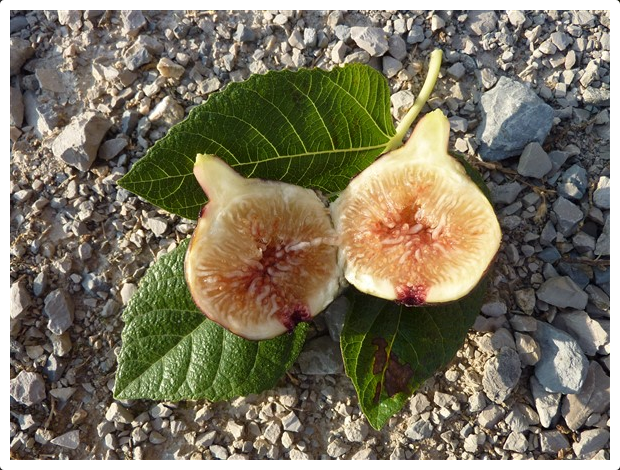This site contains affiliate links for which I may be compensated.
Cascitello
Cascitello Information


-
Possible Synonyms / AKA:
Casciteddha, Cascella, Cascetta, Banegra, Colummo, Colombo, Schiavone, Schivone, Niuro, Canibianco, Canibianchi, Mario, Mariu, Napulitanu
-
Introduced By:
-
Origin:
-
Main Flavor Group:
-
Family Group:
-
Fig Type:
Common - Self fertile and will grow anywhere conditions are suitable -
Cold Hardy:
N/A -
Container Variety:
N/A -
Easy Rooting:
N/A -
Main Season:
any -
Availability:
N/A -
Breba Crop:
N/A -
Seed Crunch:
N/A -
Eye:
N/A -
Skin Toughness:
N/A -
Fruit Size:
N/A -
Rain Resistance:
N/A -
Tree Vigor:
N/A -
External Links:
http://planetfig.com/cultivars/fcveng8590.html
Description
Condit Monograph
Cascitello: Described by Guglielmi (1908) and DE Rosa (1911) as Cascitello; described by Vallese (1909) and Donno (1951a) as Nero. DE Rosa states in a footnote that he prefers the name Cascitello over Nero, as the latter is a general one, commonl used for other varieties. DE Rosa gives the following synonyms: Casciteddha, Cascella, Cascetta, and Banegra. Vallese and Donno give additional synonyms: Colummo, Colombo, San Pietro, Sampiero, Schiavone, Niuro, Canibianco, Mario, Mariu, and Napulitano. Two of these, San Pietro and San Piero (Sampiero), are described elsewhere in this monograph as distinct varieties. As pointed out by Donno, Cascitello (synonym Colummo) should not be confused with Colummone or Colombo Pazzo (Colombro).
Trees widely planted in Lecce Province, producing two crops; leaves generally 3- lobed; terminal buds brick red, as described by Donno (1951a).
Breba crop generally abundant, although scarce in some years; fruits turbinate, broad at apex; stalk short, often swollen; skin greenish violet, checking somewhat at maturity; pulp rose-colored, very sweet; seeds few, hollow.
Second-crop figs of two sorts; the caprified, designated as Schiavoni, and the uncaprified, designated as Canibianchi. Schiavoni medium, oblate, depressed at the apex; stalk short; eye rather large, with scales violet; skin checking rather prominently at maturity, readily peeled; color violet- Black ; pulp coral red; seeds fertile. Canibianchi smaller, sometimes not even half the size of the Schiavoni, much lighter in color of skin and pulp; flavor sweet; seeds few. Fruit of Cascitello is mostly consumed fresh, especially the Canibianchi; the Schiavoni are preferred for drying.
Cascitello: Described by Guglielmi (1908) and DE Rosa (1911) as Cascitello; described by Vallese (1909) and Donno (1951a) as Nero. DE Rosa states in a footnote that he prefers the name Cascitello over Nero, as the latter is a general one, commonl used for other varieties. DE Rosa gives the following synonyms: Casciteddha, Cascella, Cascetta, and Banegra. Vallese and Donno give additional synonyms: Colummo, Colombo, San Pietro, Sampiero, Schiavone, Niuro, Canibianco, Mario, Mariu, and Napulitano. Two of these, San Pietro and San Piero (Sampiero), are described elsewhere in this monograph as distinct varieties. As pointed out by Donno, Cascitello (synonym Colummo) should not be confused with Colummone or Colombo Pazzo (Colombro).
Trees widely planted in Lecce Province, producing two crops; leaves generally 3- lobed; terminal buds brick red, as described by Donno (1951a).
Breba crop generally abundant, although scarce in some years; fruits turbinate, broad at apex; stalk short, often swollen; skin greenish violet, checking somewhat at maturity; pulp rose-colored, very sweet; seeds few, hollow.
Second-crop figs of two sorts; the caprified, designated as Schiavoni, and the uncaprified, designated as Canibianchi. Schiavoni medium, oblate, depressed at the apex; stalk short; eye rather large, with scales violet; skin checking rather prominently at maturity, readily peeled; color violet- Black ; pulp coral red; seeds fertile. Canibianchi smaller, sometimes not even half the size of the Schiavoni, much lighter in color of skin and pulp; flavor sweet; seeds few. Fruit of Cascitello is mostly consumed fresh, especially the Canibianchi; the Schiavoni are preferred for drying.
If you'd like your banner to be shown here and throughout Fig Database, send us a message.
Photos Add Your Image
No Images Found
YouTube Videos
No Videos Found






